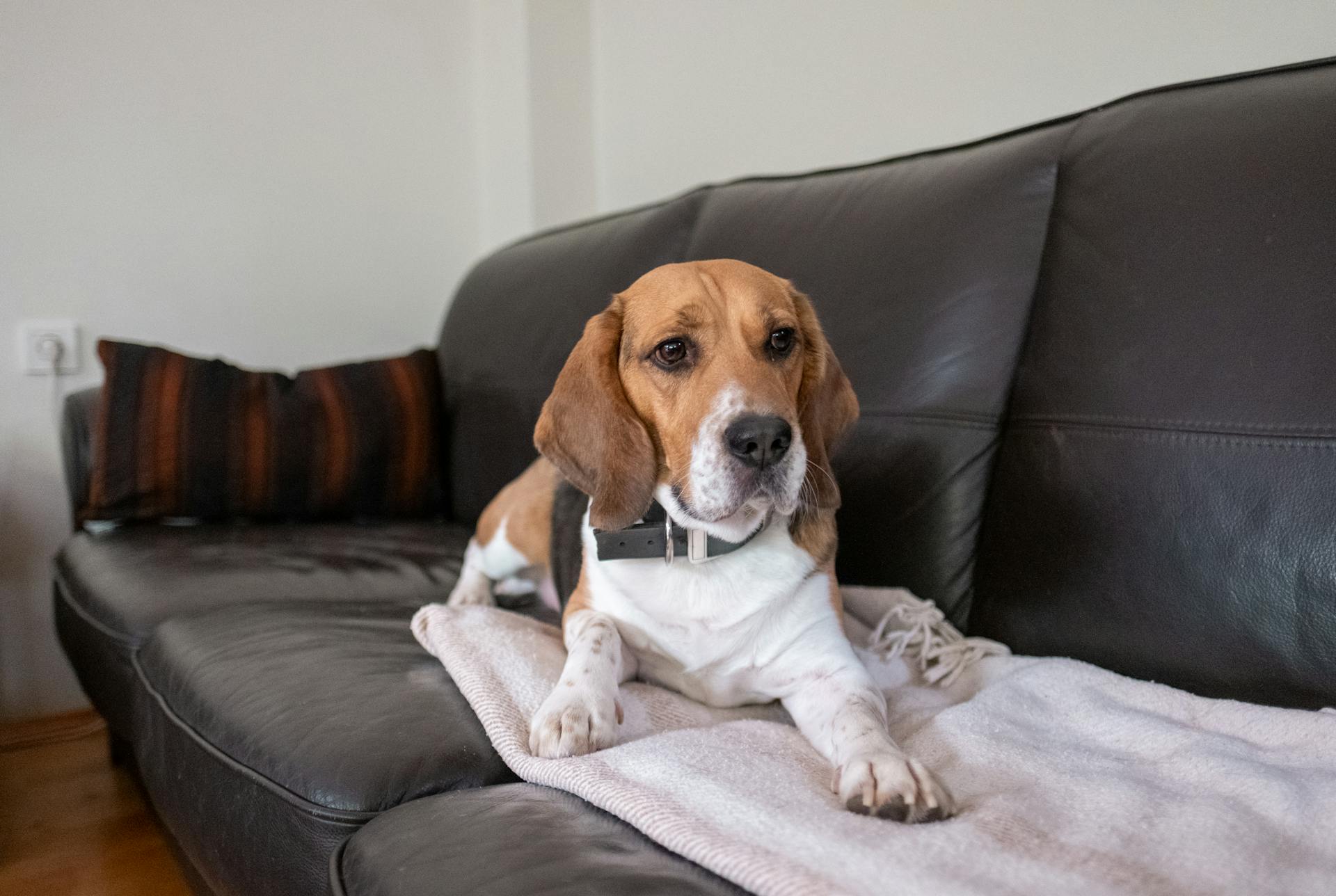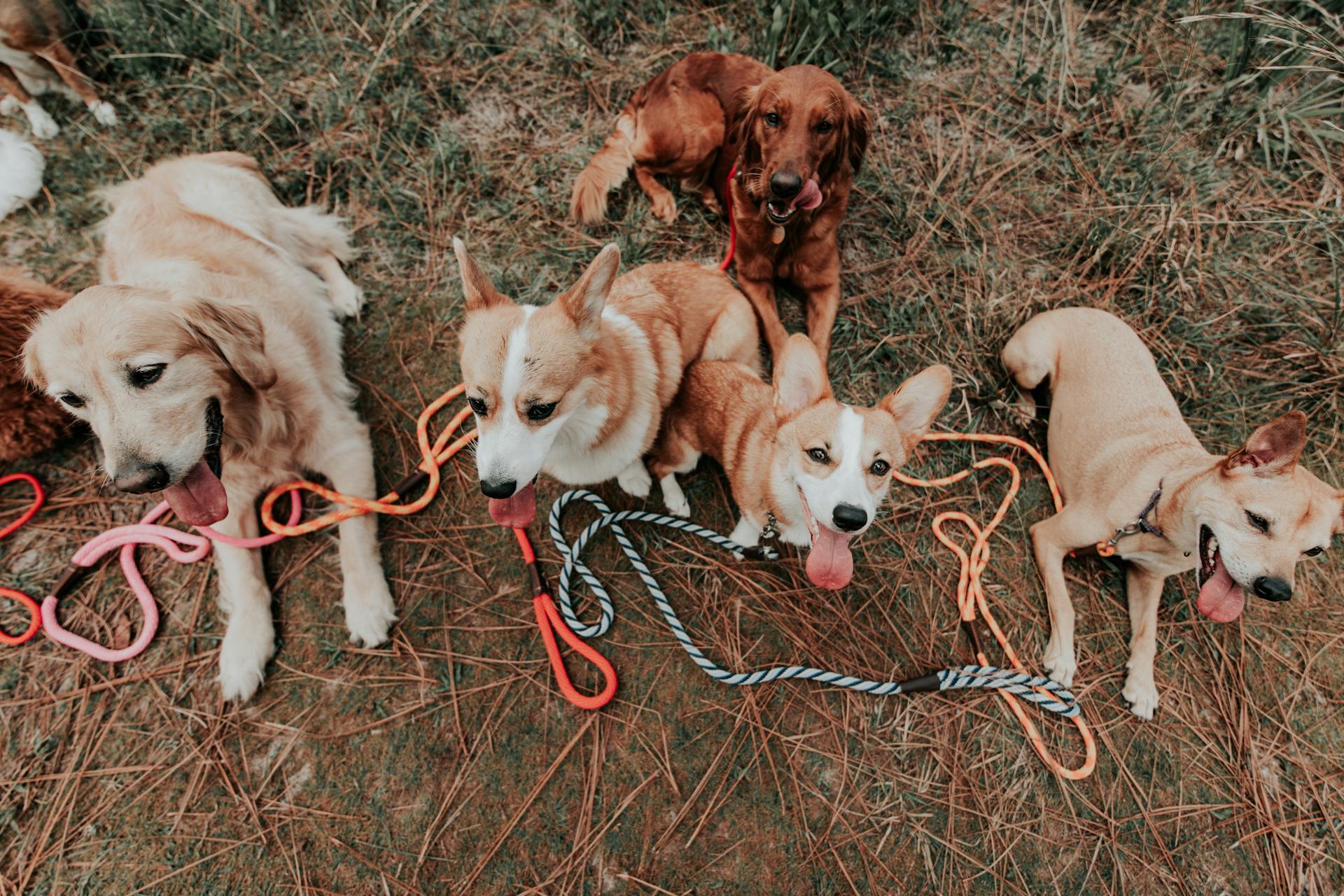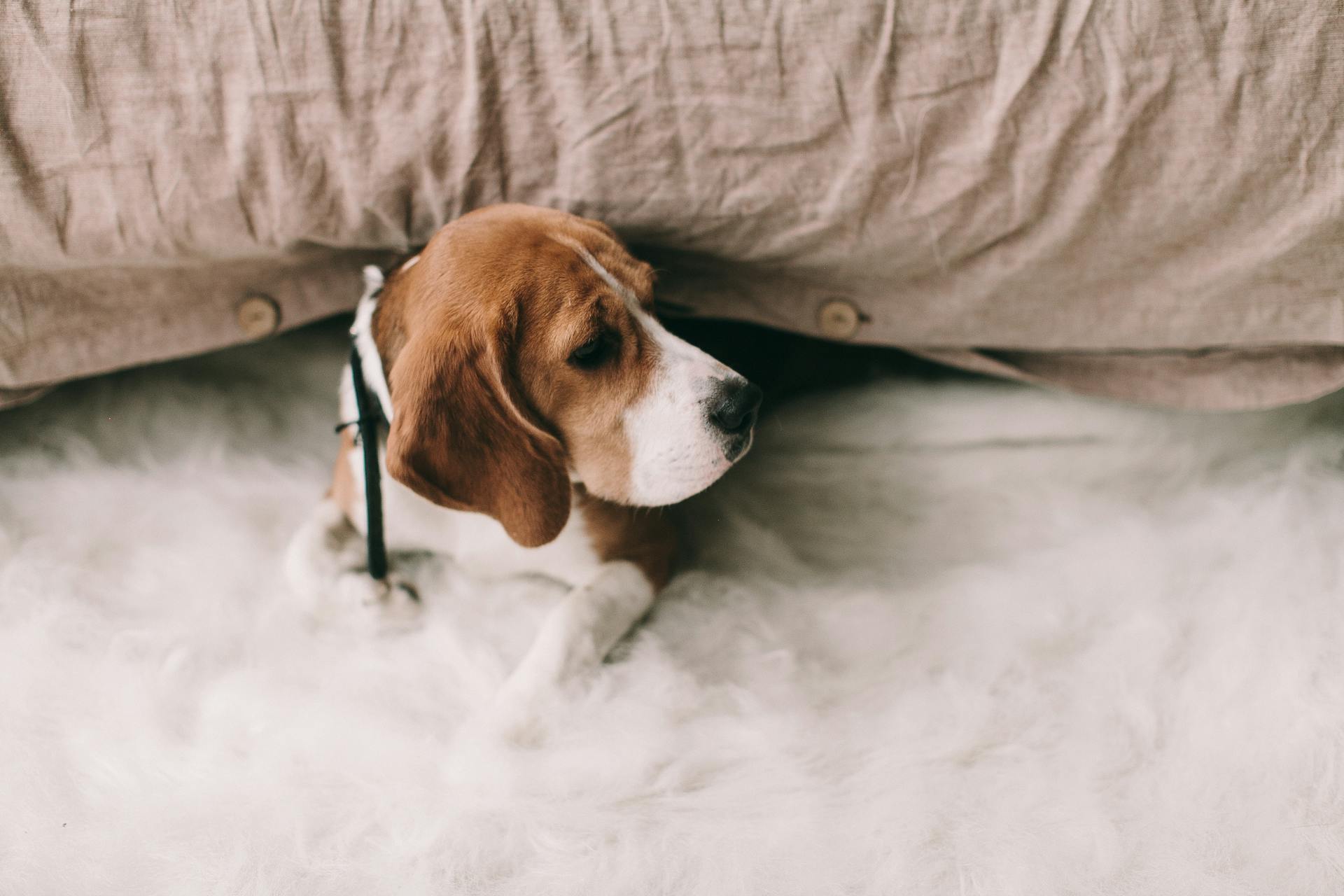
The Pocket Beagle and the Beagle - two breeds that are often confused with each other due to their similarities. One of the main differences between the two is their size, with the Pocket Beagle being a smaller version of the Beagle.
The Pocket Beagle weighs between 7-10 pounds and stands about 10-13 inches tall, making it a great companion for city dwellers or those who want a smaller dog. They are also known for their friendly and energetic personalities.
In contrast, the Beagle is a bit larger, weighing between 18-30 pounds and standing about 13-15 inches tall. They are also known for their friendly and curious nature, but require more exercise and space to move around.
Despite their differences, both breeds are known for their short coats and relatively low maintenance grooming needs.
Physical Characteristics
Pocket Beagles typically grow to be between 7 and 12 inches tall and weigh 7 to 15 pounds.
One of the defining characteristics of Pocket Beagles is their compact size, which makes them a great fit for apartment living.
Their weight range of 7 to 15 pounds means they require less food and exercise than standard Beagles, making them a great choice for those with limited space.
Because the American Kennel Club does not recognize Pocket Beagles, their size and weight may not meet the organization's standards.
Consider reading: Size of Beagle Dogs
Physical Characteristics
Pocket Beagles are quite small, growing to be between 7 and 12 inches tall.
Their weight range is also relatively low, typically falling between 7 and 15 pounds.
Beagles in the 15-inch class have a shoulder height of between 13 and 15 inches and generally weigh between 20 and 25 pounds.
In the 13-inch class, Beagles have a height of 13 inches or lower and a weight range of 15 to 18 pounds.
The American Kennel Club recognizes two classes of Beagles for show, but they don't recognize Pocket Beagles because they fall just short of the required weight and size requirements.
A Pocket Beagle at the high end of the height and weight range could technically qualify for the 13-inch class of Beagle.
Coat Color and Grooming
The Pocket Beagle and Beagle breeds have some similarities when it comes to their coat colors. Both breeds can have a variety of colors, including black, tan, red, white, brown, liver, blue, and gray.
The breed standard for Beagles says any hound color is acceptable, but the most common color combination is tricolor with a black saddle and tan on the head and around the saddle. They can also have freckling, mottling, ticking, and grizzling.
The Pocket Beagle has a coat color palette that is similar to the Beagle, with colors including black, gray, tan, red, blue, cream, white, brown, liver, and lemon.
Here's a comparison of the coat colors of the Pocket Beagle and Beagle breeds:
Both breeds have a smooth, dense coat that is resistant to rain. However, the Pocket Beagle has a slightly shorter coat than the Beagle, which is classified as medium length.
The Pocket Beagle requires minimal grooming, while the Beagle also requires minimal grooming. They both need to be brushed at least once a week to loosen and remove dead hair and encourage new growth.
Visual Differences
Pocket Beagles have narrower muzzles than Standard Beagles. Their body shape often seems disproportionate to their legs.
Their stomachs distend more than those of Standard Beagles. This can be a noticeable difference.
Pocket Beagles have wider heads and bulging eyes. This can make them appear even more adorable.
They are often born with protruding tongues and an overbite. Despite these differences, they are still lovable pets.
They grow to be between 7 and 12 inches tall. This is significantly smaller than Standard Beagles.
Pocket Beagles weigh between 7 and 15 pounds. This is also smaller than the average weight of Standard Beagles.
Take a look at this: Moyen vs Standard Poodle
Personality and Temperament
Both Pocket Beagles and Beagles are known for their friendly and outgoing personalities. They are loving and gentle, making them great family dogs.
They are highly social breeds that thrive on interaction and attention from their human family. In fact, they can become depressed and destructive if left alone for too long.
Pocket Beagles are particularly affectionate and loyal, often following their owners around the house. They are also relatively easy-going and adaptable, making them a great choice for novice owners.
Beagles, on the other hand, have a strong prey drive and may not be the best fit for homes with small pets. However, with proper socialization and training, they can get along well with other animals.
Here's a comparison of the two breeds' temperament:
Overall, both Pocket Beagles and Beagles make wonderful family pets, but it's essential to consider their individual needs and temperaments when deciding which breed is right for you.
Health and Care
The Pocket Beagle and Beagle breeds are generally healthy, but they can be prone to certain health issues. The Pocket Beagle is a healthy breed, but there are certain health issues that you should check with your vet regularly.
Regular veterinary visits are crucial to monitor the health of your Pocket Beagle or Beagle. Both breeds should have a complete physical check-up at least once per year. This will help catch any potential health problems early on.
Some common health concerns for both breeds include Patellar Luxation, Hypothyroidism, Epilepsy, and Intervertebral Disk Disease. Hip Dysplasia is also a concern, particularly for the Beagle breed. It's essential to be aware of these potential health issues and work with a reputable breeder to minimize the risk of inherited conditions.
Here are some specific health issues that can affect Pocket Beagles and Beagles:
- Pocket Beagle: Patellar Luxation, Hypothyroidism, Epilepsy, Intervertebral Disk Disease, Beagle Dwarfism, Chinese Beagle Syndrome, Eye Diseases, Cleft Lip, Cleft Palate, Canine Hip Dysplasia (CHD), Funny Puppy Syndrome, Hermaphroditism, Epiphyseal Dysplasia
- Beagle: Hip Dysplasia, Patellar Luxation, Hypothyroidism, Progressive Retinal Atrophy (PRA), Epilepsy, Intervertebral Disk Disease, Cherry Eye, Distichiasis, Glaucoma, Beagle Dwarfism, Chinese Beagle Syndrome
Health
The health of your Pocket Beagle or Beagle is a top priority. Both breeds are generally healthy, but there are certain health issues you should be aware of.
The Pocket Beagle is prone to health issues such as Patellar Luxation, Hypothyroidism, Epilepsy, Intervertebral Disk Disease, and Cryptorchidism.
Beagles, on the other hand, are susceptible to Hip Dysplasia, Patellar Luxation, Hypothyroidism, Progressive Retinal Atrophy (PRA), Epilepsy, Intervertebral Disk Disease, and Cherry Eye.
Regular veterinary visits are essential to monitor your dog's health and catch any potential issues early. Both Pocket Beagles and Beagles should have a complete physical check-up at least once per year.
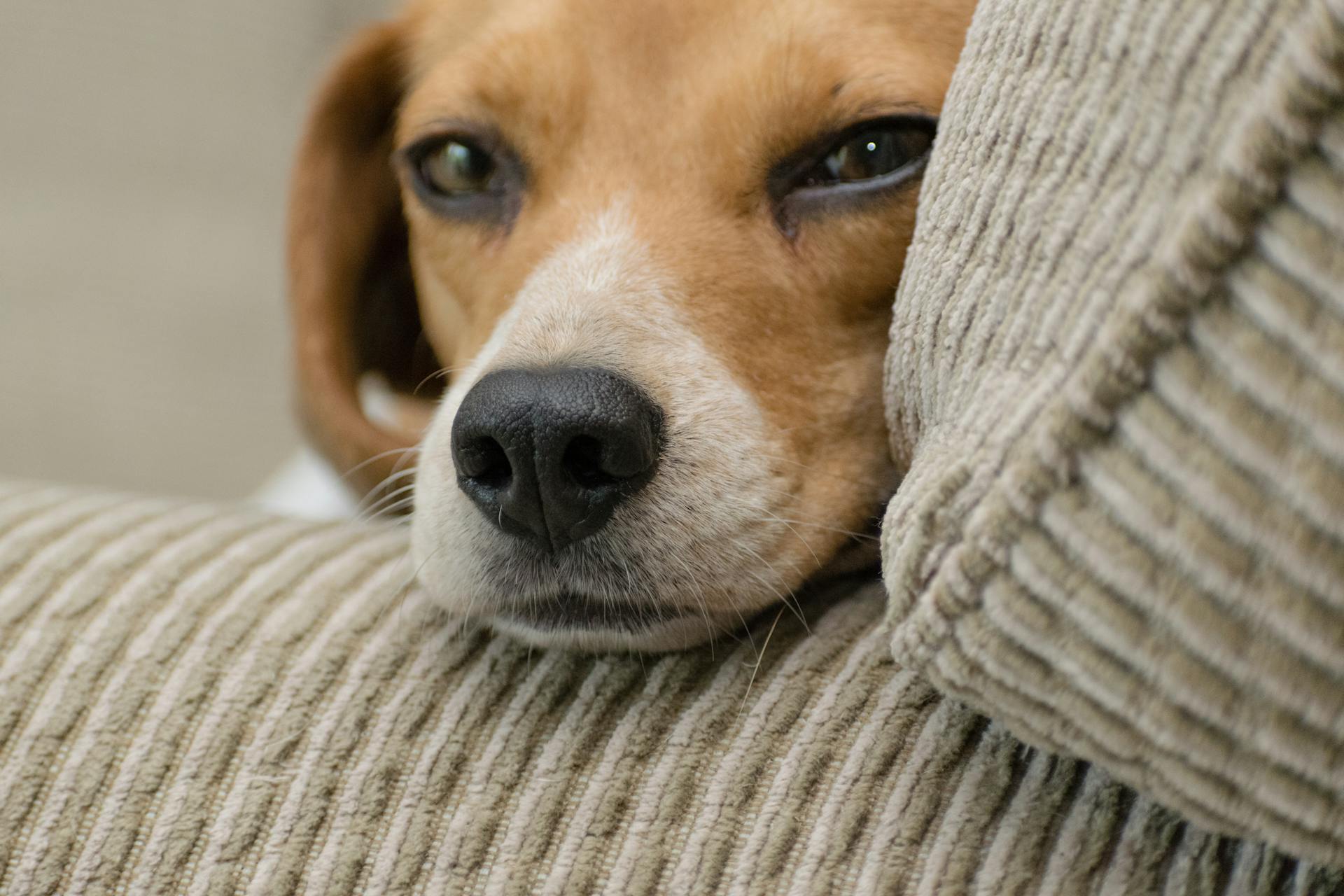
Here are some common health concerns for both breeds:
It's essential to work with a reputable breeder who has taken steps to prevent health problems and has obtained health certifications for the puppy's parents. Some health issues may not appear until a dog reaches full maturity, so look for a breeder who doesn't breed their dogs until they're at least two years old.
For your interest: Pocket Beagle Health Issues
Care
When outside, a pocket Beagle should always be on a leash in unconfined areas because they're natural wanderers and can easily escape.
They'll need to be microchipped and wearing I.D. tags so they can be returned to you if they do get lost.
Beagles benefit from obedience training, and positive reinforcement techniques work best because they'll tune out if treated harshly.
Most Beagles are happy to do anything for a tasty treat, making training a breeze.
Adolescent Beagles are full of energy and need plenty of opportunities to work it all off.
They love going for walks with their family or running across a field to hunt down rabbits, but be sure to wait until they're at least 18 months old before starting them on repetitive exercises like jogging to avoid joint damage.
As they mature, Beagles can become fairly lazy and prone to obesity, so it's essential to keep them active and prevent this from happening.
Feeding
Feeding your Beagle is crucial for maintaining their overall health and well-being.
Determine your Beagle's daily food needs by considering their size, age, build, metabolism, and activity level. Highly active dogs require more food than couch potatoes do.
Measure food carefully to avoid overfeeding, and cut back if you notice your Beagle putting on pounds. They should have a waist and you should be able to feel their ribs but not see them.
Beagles are notorious food thieves, so feed them at specific times each day rather than leaving food out all the time. This will help prevent overeating and maintain a healthy weight.
Dole out treats sparingly, as your Beagle will be just as happy with a tiny training treat as a bigger biscuit.
Reproducibility
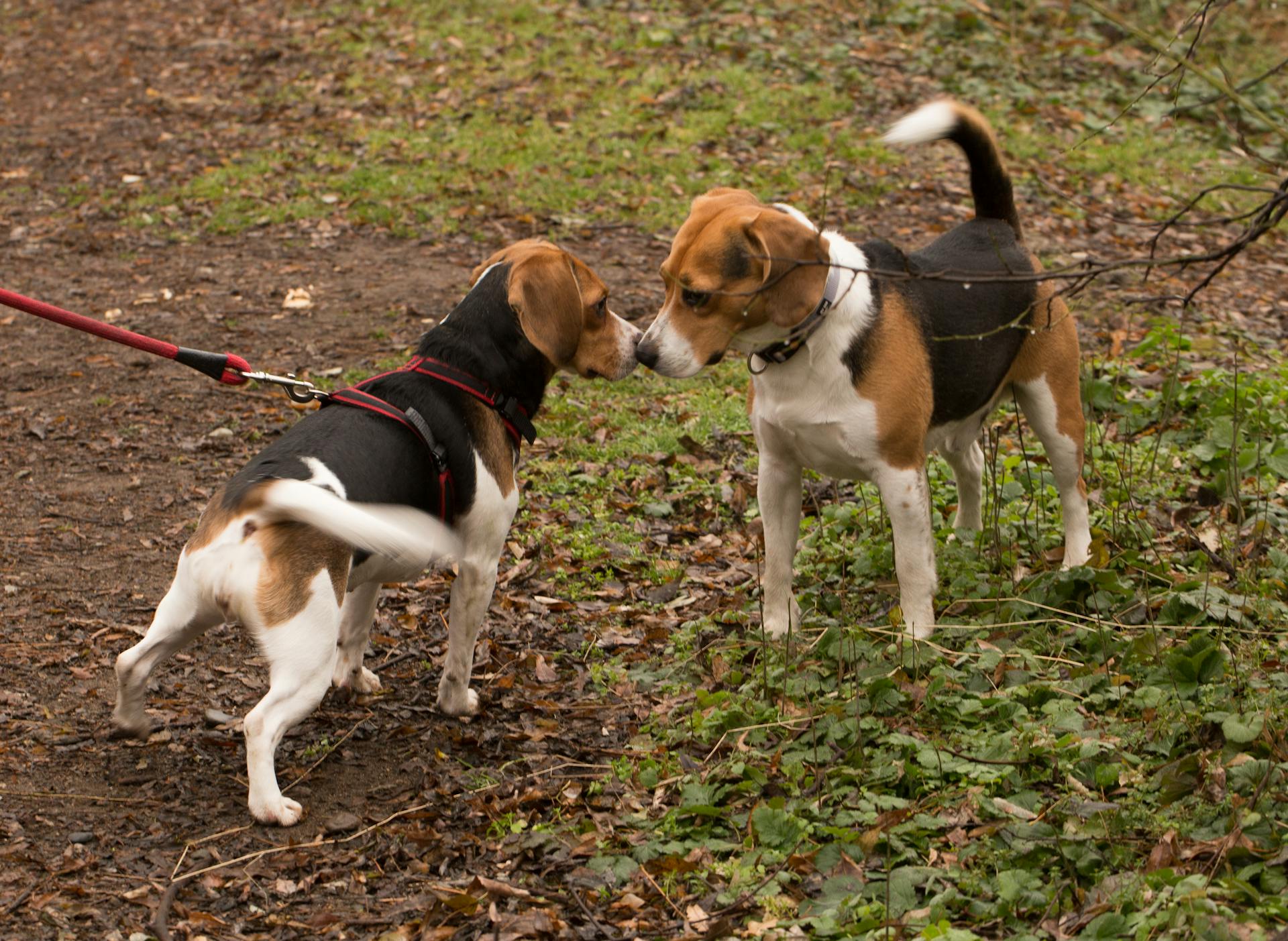
Reproducibility is a crucial aspect of responsible dog ownership. Both Pocket Beagles and Beagles have a relatively long gestation period of 60-64 days.
To ensure the health of your female dog, it's essential to breed them only once a year. Breeding too frequently can be detrimental to their well-being.
Here's a comparison of litter sizes between Pocket Beagles and Beagles:
This significant difference in litter size can impact the resources and care required for each breed.
Behavior and Training
Training a Pocket Beagle can be challenging due to their short attention span, so it's essential to keep training sessions short, around 5-10 minutes a day.
It's also helpful to hold your Pocket Beagle after a long walk to keep them focused, and establishing a routine can make training easier.
Positive reinforcement with treats and praise is a good idea, and it may take weeks or months for your Pocket Beagle to learn a new trick, even with plenty of intelligence and ability.
Activity and Playfulness
The Pocket Beagle and Beagle breeds are both known for their high energy levels and playful nature. The Pocket Beagle is a playful breed that needs quite a lot of exercise, while the Beagle is a highly playful breed that also requires a lot of activity to stay happy and healthy.
Both breeds are particularly loud, barking a lot, which is something to consider if you live in an apartment. However, the Pocket Beagle is apartment-friendly, making it a better choice for city dwellers. The Beagle, on the other hand, is not recommended for apartment living due to its high energy level and need for regular exercise.
Here's a comparison of their energy levels and exercise needs:
As you can see, both breeds require a significant amount of exercise to stay happy and healthy. The Pocket Beagle needs at least 30 minutes of activity per day, while the Beagle requires regular long walks and playtime. They also don't spend too much time sleeping, making them great companions for families who enjoy active lifestyles.
Training
Training can be a challenge with Pocket Beagles, as they have a hard time staying focused for long periods. Their intelligence is sufficient to learn several tricks, but it requires patience and consistent effort.
Setting aside 5-10 minutes each day for a training session is a good starting point. Holding them after a long walk can help keep them focused, making training more effective.
Positive reinforcement with treats and praise is essential when the dog does well. This approach can help build trust and encourage learning.
It can take weeks or months for Pocket Beagles to learn a new trick, even with their intelligence and ability. Sticking to a routine and being consistent is crucial for successful training.
Expand your knowledge: Pigs Intelligence vs Dogs
Working Dog
As a dog owner, you might be wondering which breeds make good working dogs. Let's take a look at the Beagle and Pocket Beagle breeds.
Beagles can make excellent service dogs, but Pocket Beagles are not typically used for this type of work.
If you're looking for a breed that can excel as a detection or sniffer dog, the Beagle is a great choice, but Pocket Beagles are not typically employed for this type of work.
Beagles, on the other hand, can make excellent search and rescue dogs, whereas Pocket Beagles are not typically used for this type of work.
If you're planning a boat trip, the Beagle breed is more likely to enjoy being on a boat than the Pocket Beagle breed.
Here's a quick rundown of the working dog potential of both breeds:
Frequently Asked Questions
What are the three types of Beagles?
There are three types of Beagles: the Common Beagle, the Puggle (a mix of Beagle and Pug), and the Poogle (a mix of Beagle and Poodle). These variations offer unique characteristics and traits that set them apart from the standard Common Beagle.
Are pocket beagles rare?
Unfortunately, the term "pocket beagle" is often misused to describe underweight Beagles, which can be prone to health issues, rather than a rare breed itself. If you're looking for a unique breed, you may want to explore other options, such as the English Pocket Foxhound.
What makes a Pocket Beagle?
A Pocket Beagle is a compact dog breed that stands around 10 inches tall, characterized by a friendly demeanor and distinctive Beagle traits. They are a smaller-sized version of the traditional Beagle breed.
Featured Images: pexels.com
